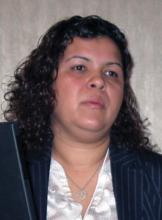PHILADELPHIA – Having emergency physicians start children with persistent asthma on a prescription of an inhaled corticosteroid failed to have a significant impact on the rate at which the families filled a second, follow-up prescription for the same drug from their primary care pediatrician, according to a controlled study with 153 children.
But the study results did show, for the first time in a controlled study of children, that intervention with an inhaled corticosteroid can significantly improve asthma symptoms over the short term, Dr. Esther M. Sampayo said at the annual meeting of the Eastern Society for Pediatric Research.
"National guidelines have recommended that emergency physicians consider initiating control medications [for children with asthma] in the emergency department," she said. When children don’t receive such a prescription, it’s "a missed opportunity for children who are high emergency department utilizers," said Dr. Sampayo, a pediatric emergency physician at Children’s Hospital of Philadelphia.
"We found that at 2 months [after the index emergency department visit], fewer than 20% of children actually filled a second prescription for their control medication," with similar rates in both the control and intervention groups of the study. This level of failure occurred even though when each child received the initial prescription, the researchers told the family to fill a follow-up prescription from the child’s primary care pediatrician, each pediatrician received an alert to write the second prescription, and virtually all the families had public or private insurance that covered the drug’s cost.
"We’re now testing a new intervention, sending parents a text message to remind them to refill their child’s prescription," Dr. Sampayo said in an interview.
The findings also highlighted the important role that emergency physicians can play in starting children on an inhaled corticosteroid. In prior studies, researchers asked emergency physicians why they generally did not start children with poorly controlled asthma on control medication. The physicians said that they didn’t view it as their appropriate role, and that this task was best reserved for primary care physicians. "All the pediatricians in our study said that the emergency department physicians should write the prescription. They want the emergency physician to do it," she said.
The study enrolled children seen in the emergency department of Children’s Hospital of Philadelphia with an average age of 5 years (range, 1-18 years) during 2006-2009. After randomization, the families of 74 children received a starter prescription for a 30-day supply of an inhaled corticosteroid, either budesonide for children aged 4 or younger, or fluticasone for those aged 5 or older, as well as educational materials and other standard discharge medications for asthma. The 78 control families received the same educational materials and discharge medications but no prescription for a corticosteroid.
By 8 weeks after the emergency department visit, about 63% of the intervention families had filled their initial corticosteroid prescription, compared with about 27% of the control families, a statistically significant difference. But the rate at which the intervention families filled the second prescription – the one they had to get from the child’s primary care pediatrician – dropped to roughly 20% of the intervention families, no different from the 18% rate among the control families. The researchers have not yet examined whether the breakdown in follow-up prescriptions occurred at the level of the primary care pediatrician or in the family’s failure to fill a second prescription that they received.
The follow-up data also showed that while on the initial course of an inhaled steroid, the children had, on average, a significant 2-day drop in the number of days they coughed while asleep, and a significant halving of the number of days when they experienced shortness of breath.
In addition, the first course of an inhaled corticosteroid led to a significant reduction in the use of albuterol as a rescue medication. Children in the intervention group had a 43% rate of never using albuterol or using it less than twice during follow-up, compared with 21% having this usage rate among the control children. At the other end of the spectrum, children in the intervention group had a 44% rate of using albuterol either daily or every other day during follow-up, compared with a 65% rate of such heavy use by the control children.
Dr. Sampayo said that she and her associates had no relevant financial disclosures.


